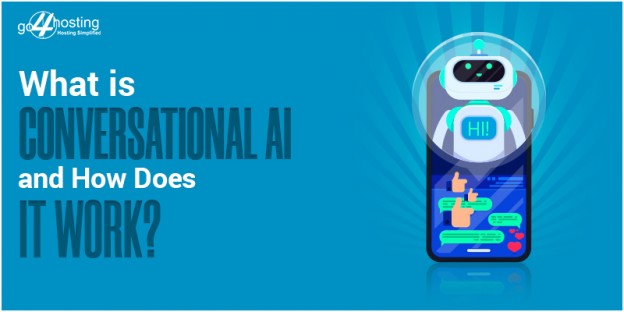Table of Content
- How does Conversational AI work?
- What is the difference between Conversational AI and a chatbot? What can Conversational AI be used for?
- What are the main challenges in Conversational AI?
- Constantly changing communication
- Security and Privacy
- Discovery and Adoption
- Why is ASR important?
- How does ASR work?
- Challenges with ASR
- Conclusion
Conversational AI refers to the technologies that enable human-like interaction between a computer and a person. Conversational AI is a combination of both science and art making it more relevant and personalized. Conversational AI can be used for both voice and text modalities. Conversational AI can be used for SMS, web chat, smart speakers and phone calls.
The aim is to develop a conversational AI that is able to interact like a human. Imagine getting a task done in a similar manner as you would have if you were interacting with a human being.
How does Conversational AI work?
Conversational AI uses a combination of multiple technologies such as:
- Automatic Speech Recognition (ASR)
- Natural Language Processing (NLP)
- Advanced Dialog management
- Machine Learning (ML)
What is the difference between Conversational AI and a chatbot? What can Conversational AI be used for?
Conversational AI can be designed to create a wide variety of products that can be used by businesses to communicate with their customers or they can also be used for internal communication. The most commonly used conversational AI is an FAQ bot also referred to as chatbots. These are basically a question and answer machine where you type in a keyword to get an appropriate response.
Next comes the virtual assistant conversational AI applications such as Alexa, Siri and Google home. They are an advanced version of conversational AI that are capable of interacting with humans using ASR and NLP. In the end, we have virtual customer assistants that are used to serve a specific purpose. Most organization’s have already started to use virtual customer assistants to assist their customers. These virtual assistants are capable of responding to customer queries by gathering information gained from previous interactions.
What are the main challenges in Conversational AI?
Conversational AI faces a wide variety of challenges that require highly advanced technological solutions.
Constantly changing communication
In order to communicate with humans, conversational AI needs to understand different languages, accents, dialects, and slangs. It can be a bit difficult as it constantly keeps on evolving and poses a significant challenge for conversational AI.
Security and Privacy
Security is of utmost importance especially when it comes to personal information. Conversational AI must be designed to protect the information of both the individual and organization.
Discovery and Adoption
Even though conversational AI has become part of our daily life. There are still some people who are a bit hesitant in interacting with a conversational AI. This is the reason why it is necessary to raise awareness about conversational AI so more people can embrace this new technology.
Why is ASR important?
Automatic Speech Recognition allows the conversational AI to understand what the user has said and then respond appropriately. If the conversational AI fails to do so then it won’t be able to communicate with humans efficiently. This is the reason why it is important to evaluate the quality of the ASR to ensure that the conversational AI functions accurately.
How does ASR work?
Basically, when a customer speaks into a device it creates sound waves. The application then gets rid of any background noise. The sound wave is then converted into phonemes which are then used to understand the intent of the customer. Over a period of time, the quality of the ASR will improve as more data gets generated through these interactions.
Challenges with ASR
There are plenty of challenges such as noisy background, thick accent, and bad reception. It is also difficult to detect alphanumeric characters such as phone numbers and email addresses. In such scenarios, customers might have to repeat themselves which can lead to a bad customer experience.
Conclusion
Conversational AI is a futuristic technology that has implications for a wide variety of industries. It definitely requires a lot of work before it can truly replace humans. However, it seems that it can be achieved over a certain period of time. In the future, we can look ahead to interacting with conversational AI. It can help save a lot of valuable time and effort. Conversational AI can also be a cost-effective solution for organizations looking for more affordable ways to communicate with their customers.






 Live Chat
Live Chat